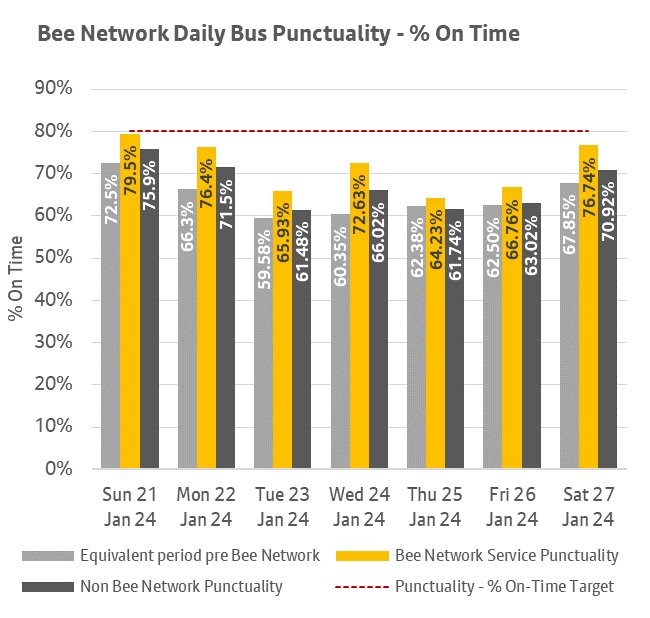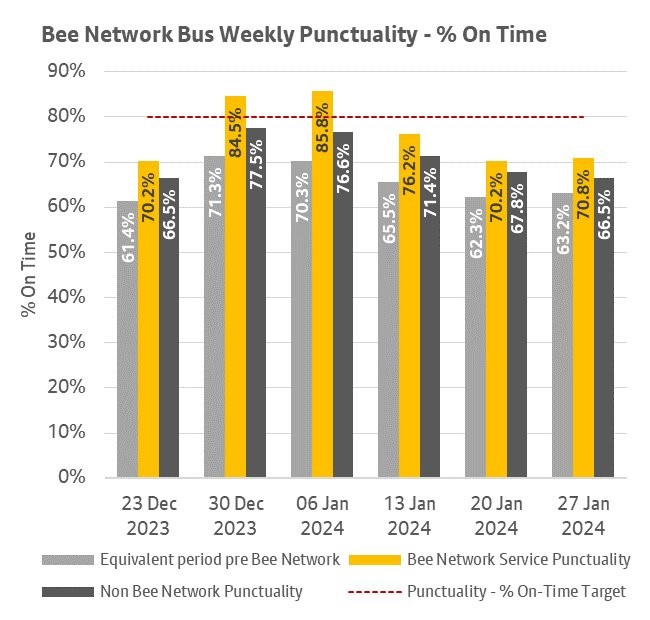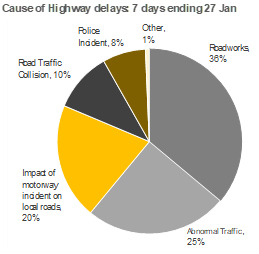Summary: Between 21 January and 27 January 2024, we’ve seen more Bee Network services on time compared to both non-Bee Network and pre-Bee Network services during the same period last year.
About the data:
The Bee Network Punctuality table has three columns showing the percentage of bus services running ‘on time’ each day in a 7-day period.
It shows:
- Pre-Bee Network punctuality: Results for the same period in 2023, before those bus services joined the Bee Network.
- Bee Network punctuality: Results for current Bee Network services.
- Non-Bee Network punctuality: Results for buses in Greater Manchester that are not yet part of the Bee Network.
This allows you to compare past and present performance. The Senior Traffic Commissioner (responsible for licensing and regulating bus services) classes services running between one minute early and five minutes late as ‘on time’. This allows for road traffic conditions which can affect bus running times.
Bee Network daily bus punctuality - % on time
The chart shows daily punctuality data for Bee Network services and non-Bee Network services. It also shows punctuality data for the same services that are now part of the Bee Network, before they came under local control.
This daily punctuality shows that between 21 January and 27 January 2024, more Bee Network services were on time compared to non-Bee Network and pre-Bee Network services.

Bee Network weekly bus punctuality - % on time
The chart shows weekly punctuality data for Bee Network services and non-Bee Network services over a six week period ending 27 January 2024. It also shows punctuality data for the same services that are now part of the Bee Network, before they came under local control.
The weekly punctuality figures show that more Bee Network services were on time compared to both non-Bee Network and pre-Bee Network services during the same time last year.

Cause of highway delays
The chart shows the estimated causes of delay on a sample of roads on Greater Manchester’s Key Route Network.
The data shows the biggest contributors to excess delay were roadworks, abnormal traffic with no cause associated and Motorway incidents impacting the locally managed network.
